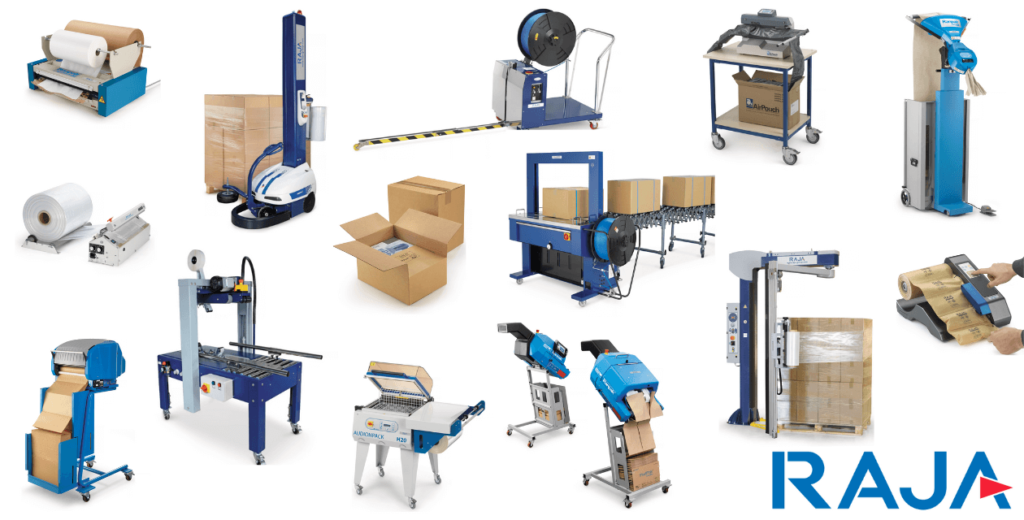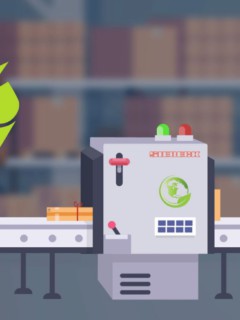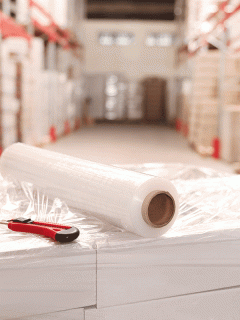Whether beauty articles, clothes or electronic items – if a product ordered online doesn’t fit or doesn’t live up to expectations, it is simply returned. However, generous return periods and free return shipping make it immensely difficult for small to medium-sized businesses to compete and are therefore always a cause for discussion: What happens to the returns? How much does a return cost? Should returns be chargeable for customers in future? In this article we answer these and other questions about returns management in the mail order business and show you how you as a retailer can reduce your returns rate.
Definition: What is returns management?
Returns management is a sub-discipline of supply chain management and generally describes the management of returned goods. The Gabler Wirtschaftslexikon defines returns management as “an essential task of return logistics and customer management“. It encompasses the cross-institutional planning, management and control of returns flows as well as the avoidance and handling of returns. The aim is to ensure customer satisfaction, prepare a resale of the product and secure a positive recommendation.
The goal of returns management is a cost-effective and customer-oriented organisation, avoidance of unnecessary returns as well as profit maximisation of the value-added system. Successful returns management in e-commerce ensures that returns are avoided in advance and made as pleasant, uncomplicated and time-consuming as possible for the customer after the order has been placed, for example with an enclosed returns note. A 14-day right of withdrawal applies throughout Europe from receipt of the goods. This requires an unambiguous written declaration, where, however, no reasons for the revocation need to be given.
Calculate return rate: Different types
The return rate describes the percentage ratio between returned goods and total goods sold. The return rate can be calculated both in terms of quantity and in monetary units. A distinction is made between three different return rates:
Alpha return rate = number of returned parcels
Alpha return rate=
(number of parcels returned)/(number of parcels shipped) x 100
Beta return rate = number of items returned
Beta return rate=
(Number of returned items)/(Number of shipped items) x 100
Gamma return rate = value of returned items
Gamma return rate=
(Value of returned items)/(Who shipped items) x 100
The alpha return rate is suitable for better planning and optimisation of parcel-related handling processes. To identify items that have a high return rate, the beta return rate should be considered. The gamma return rate, on the other hand, is price-related and gives retailers a quick overview of the value of goods that are returned.
By the way: Many retailers offer their customers free return shipping. If, on the other hand, the buyer has to pay for the return shipment himself, the retailer must inform the potential customer in advance, i.e. before the order is completed.
Background: Why are there so many returns?
There are numerous arguments why ordered goods are returned. The most common reasons for returns according to a Statista survey from 2019 are:
- The goods are not the right colour, size (58.2%), etc.
- The goods are damaged (41.3%) or dirty.
- The goods are poorly made (28.9%).
- The product looks different from the one described (26.4%).
- The product does not have the described functions (22.3%).
- It is a wrong purchase (21.2%).
- The customer found a better offer (7.1%).
- The customer only wanted to look at the product (4.2%).
- The customer finds the item too complicated to use (2.4%).
Other reasons for returns include:
- The wrong product was delivered.
- It was an impulse purchase that the customer now regrets.
- The item was delivered too late and the customer no longer needs it.
- The customer does not like the delivered item (anymore).
- The customer ordered several alternatives (e.g. different colours and dress sizes).
How much does a return cost on average?
For a return, there are hidden costs for transport, collection, processing and administration. On average, these costs amount to 7.93 euros. In a study by Retourenforschung.de with 302 mail order companies, the following process costs were calculated depending on the number of returns:
| Number of returns per year | Process costs |
| Less than 10,000 | 17,70 € |
| Between 10,000 and 50,000 | 6,61 € |
| Over 50.000 | 5,18 € |
Small to medium-sized companies with few returns bear higher costs per parcel than large companies with very many returns. In addition, the process costs are strongly dependent on the respective product: Clothing incurs lower costs than furniture or electrical goods. In addition, the loss in value of the goods must be taken into account, as an item can no longer be sold as new due to a return. Instead, the product is offered as second-hand goods, donated or even disposed of.
Why is returns management so important?
Returns management is a success factor in e-commerce. Every single return reduces a company’s profit, creates additional effort and costs. According to a survey by Statista, 490 million items and 280 million packages were returned in 2018.
With a successful returns management, you ensure that returns are reduced or even avoided in advance. Only when returns are minimised and processed more efficiently can you achieve sustainable success as an online retailer.
What are the consequences of poor returns management?
ach individual return costs the company time and more logistical effort. However, returns are not only a cost factor, they are also bad for the environment and the climate – according to a study by Businessinsider, 238,000 tonnes of CO2 emissions are caused by returns every year.
As a business owner, you have to take into account the consequences of a possible return. For example, the price of some items increases. In some cases, the goods can be sold for the same price or, if they are slightly damaged, they can be returned for less. However, since the cost of reconditioning the goods often exceeds the selling price, many items end up in the trash after inspection and evaluation.
Reducing returns: 6 tips & tricks on how it works
We’ll show you how to avoid some of your returns in advance and lower your returns rate with six recommendations. But the most important thing is: learn from the returns that have already come back. Use the data and try to understand and counteract the reasons your customers may give.
Detailed product descriptions
The more information the product page provides, the lower the probability of a return. The be-all and end-all here is real product images, a precise description of all functions and the embedding of customer reviews. In addition, frequently asked questions can be presented as FAQs and help can be offered directly via a live chat.
Reliable service
In online retail, customers rely on reliable service with attractive offers and conditions. The more contact options and touch points you provide, the easier it is for your customers to reach you. The standard is to be accessible via email, live chat, telephone and social media.
Testimonials on social media
Present your products and their functions in more detail with the help of videos and tutorials. Testimonials from drawn customers can be shared on social media and provide authenticity and trust. Through active content marketing, you can publish blog or advice articles and inform your customers about your industry and new products.
Realistic delivery times and tracking
Before each order, the customer should be shown a realistic delivery time. This varies depending on the type of product. Once the order is completed, the customer should always be able to check the current location of their parcel and choose between different delivery options.
Proper packaging for your goods
Improve your returns management with the right packaging. Protect your goods during transport with suitable shipping packaging, a moisture-repellent shipping bag or by means of practical shipping tubes. Ship in an environmentally friendly way and enable easy returns with resealable kraft paper shipping bags.
Costly returns for the customer
Depending on the type of goods, you can make your returns chargeable for the customer. For example, you can offer free return shipping for textiles, but for electrical appliances and furniture, the customer must pay the cost of a return shipment themselves. In addition, personalised items are not subject to the usual returns policy. So adapt the return options to your goods! Here you have to weigh up between customer service and sustainability. In any case, communicate your decision – many customers appreciate environmental awareness in traders.
Preventive returns management and reactive returns management
In returns management, a distinction is made between preventive and reactive returns management. Preventive or proactive returns management includes all measures to avoid returns when the customer places an order – for example, through detailed descriptions or the embedding of tutorials. Reactive returns management, on the other hand, refers to all measures for the efficient handling of returns and how they can be reintroduced into the goods cycle if necessary.
Returns management software: Returns made easy
To make returns management easier, many companies turn to returns management software. As soon as a return is announced, the software provides you with the entire returns process. The software accompanies each return from the entry of the items, the inspection of the goods, the storage in the returns warehouse as well as the processing of the complaint. All processes are also graphically mapped in the system and help you to process returns more easily and quickly. Common software solutions are, for example:
Returns management with optimal packaging from Rajapack
The RAJA Group is committed to actively and sustainably reducing the ecological footprint: We offer you alternative, reusable packaging solutions made from cardboard, recycled plastic and renewable raw materials. With the right packaging, you improve your returns management.
By the way: This is how we handle the issue of returns and returns at RAJA.
















